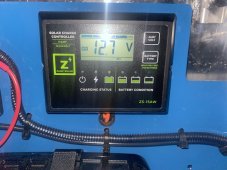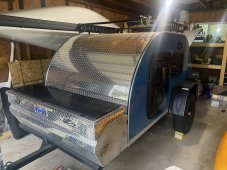I'm completely new to this, and my only knowledge comes from watching Will's YouTube Channel.
I have a small teardrop camper with a small 12v system. It currently has a lead-acid battery, and I'm looking to upgrade to a LiFePO4 12v battery.
I was just diagnosed with sleep apnea, and will need to get a CPAP machine... I know I should probably do an energy audit before I get a new battery, but my questions\concerns below are not specific to the battery capacity at this point, more about the concerns and feasibility of upgrading the battery to LiFePO4.
Current Setup:
Thank you!
I have a small teardrop camper with a small 12v system. It currently has a lead-acid battery, and I'm looking to upgrade to a LiFePO4 12v battery.
I was just diagnosed with sleep apnea, and will need to get a CPAP machine... I know I should probably do an energy audit before I get a new battery, but my questions\concerns below are not specific to the battery capacity at this point, more about the concerns and feasibility of upgrading the battery to LiFePO4.
Current Setup:
- Zamp OBSIDIAN® SERIES 90 Watt Panel
- Zamp 15 Amp 5-Stage PWM Charge Controller
- NOCO Genius 10 charger (for shore power)
- Generic Lead-Acid Battery
- Fuse Box
- Overhead LED lighting
- Autobrake Controller
- 12v cigarette outlet and USB ports
- Vibrations\Security: The base of the existing battery-box is screwed into the truck-bed-box, and the cover of the box is then strapped down to the base. Are there similar types of battery-boxes that exist for LiFePO4 batteries? Or am I better off getting rid of the box and securing some strap loops to the truck-bed-box and strapping it down that way?
- Cold Temps: I do take the camper out in late-fall when temps can fall below freezing overnight. I'm going to make sure that I get a quality battery with low-temp sensor\cutoff. But I'm wondering if the "heated" type of battery would make a difference in this situation?
- Water\Moisture: Although the truck-bed-box is supposed to be waterproof, I know its very possible that water could get in the box and onto the battery. This was making me consider the Plastic\Marine cased type battery.
- Compatibility: As far as I can tell, both the NOCO charger and the Zamp controller have modes for Li batteries, so I don't believe this will be an issue.
- Any other "Gotchas" I'm not thinking of?
Thank you!







